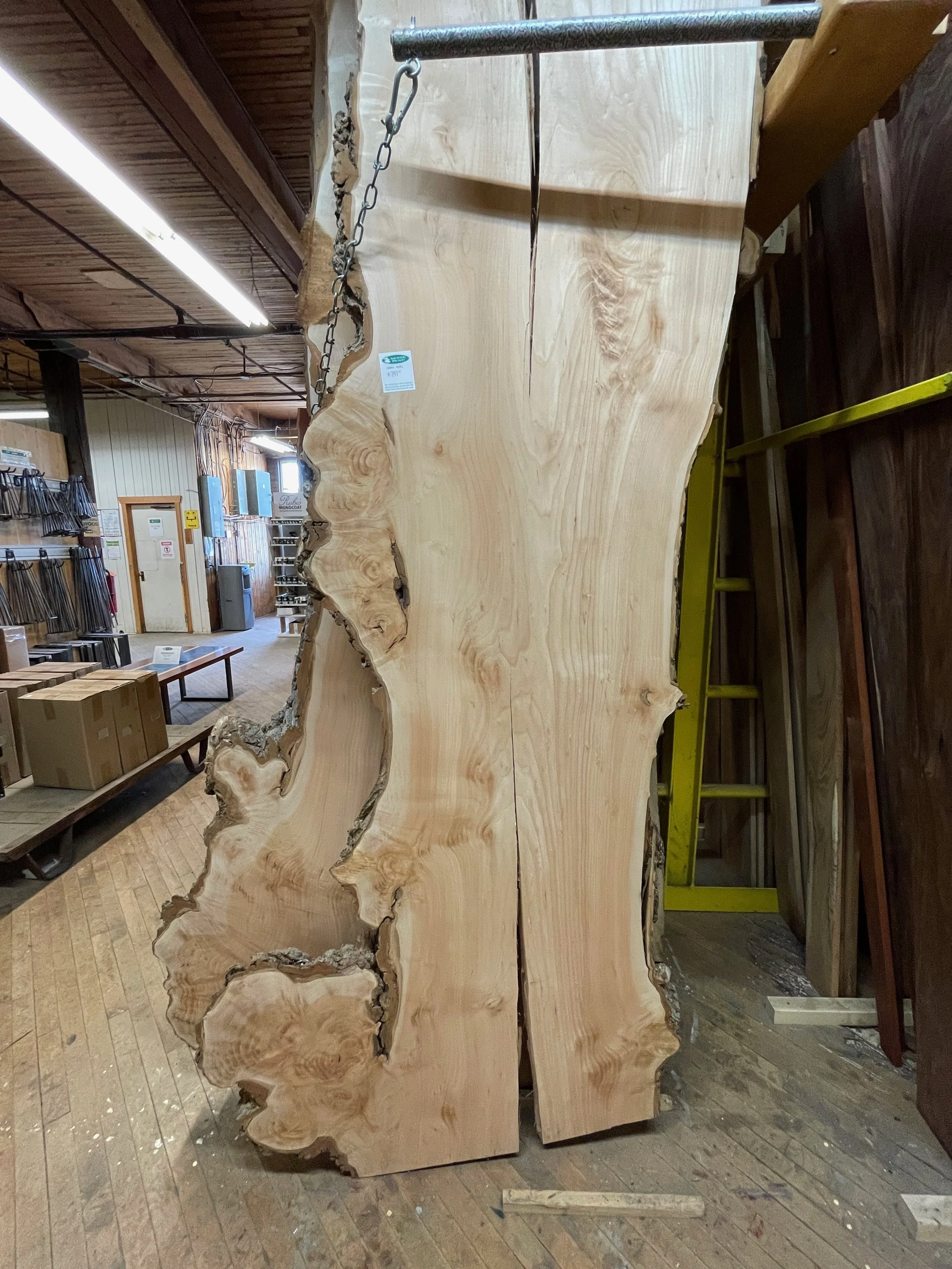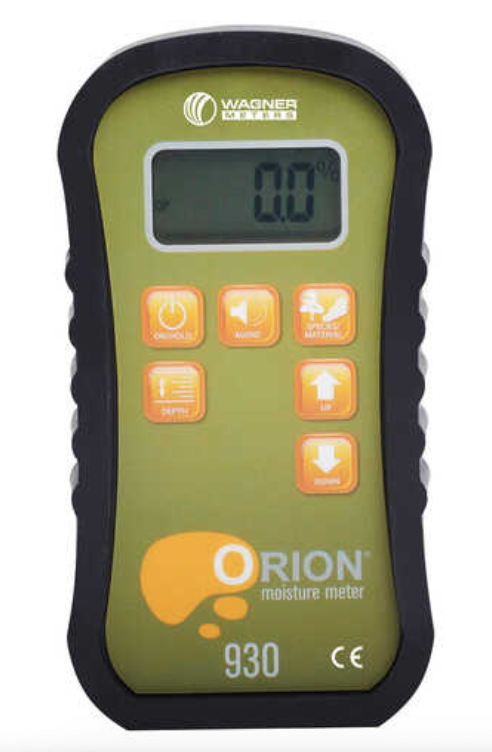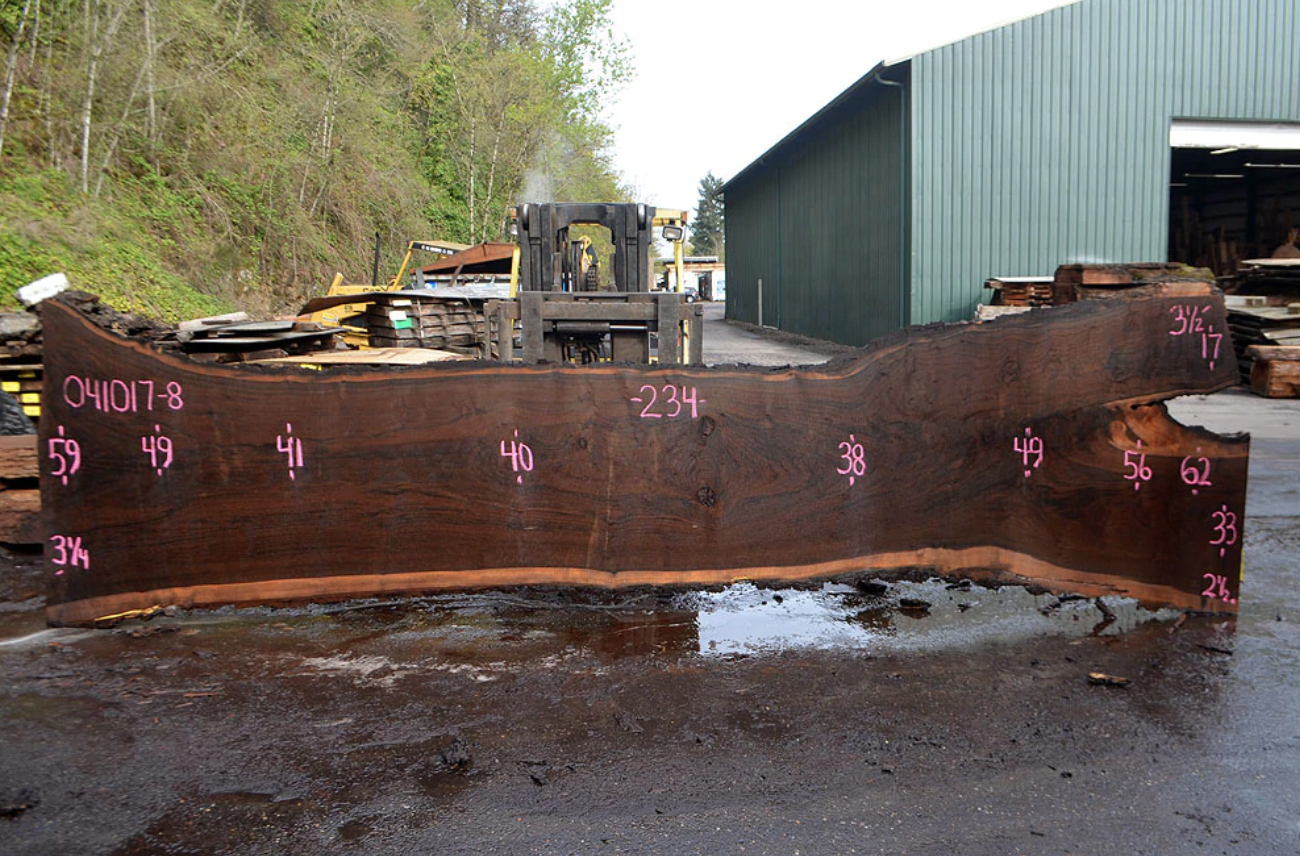How to Choose a Live Edge Slab
When you’re used to Home Depot, walking into a hardwood lumber dealer can be intimidating—especially when you’re shopping for a live edge slab.
Towering hunks of wood ranging in different sizes, species, and not to mention prices can be difficult to make sense of. Here are some things to consider that will make your purchase a little bit simpler, and more importantly, help you avoid getting a dud–because they’re out there.
Check for dryness
This is THE critical thing to look for when picking out live edge wood slabs.
All lumber should be sufficiently dried before it’s used to construct furniture. If not, disaster awaits.
Wood shrinks as it dries. This means that even if the slab feels and looks dried, wet spots will cause it to warp and move over time as it eventually dries out, which will likely ruin a project a year or so down the line.
There are only two ways to dry wood: letting it air dry over the course of a couple years, or putting it in a kiln.
Air drying can work just fine, but can produce inconsistent results since the lumber doesn’t dry out uniformly.
Kiln drying—where you essentially put the wood into a slow roasting oven—has become the industry standard as it not only produces better results, but it reduces the drying time from years to a couple months. It also ensures that bugs and fungus get killed (oh yes, that’s a thing).
But even kiln drying doesn’t guarantee there aren’t a few wet spots hiding somewhere in the slab. That’s why it’s a good practice to invest in a pinless moisture meter, which will take a moisture reading deep into the wood and let you know of any problem areas. As long as you’re getting a reading of less than 12%, you should be pretty safe.
Wagner makes an excellent moisture meter.
Side note…careful who you buy from. If you find some crazy good Facebook marketplace deal…you might get what you pay for. Do your homework on the supplier.
A good moisture meter can run a few hundred dollars, which sucks. But I’ve heard horror stories of $10,000 dining tables that rip apart after a year because they weren’t properly checked—even though they were sold by reputable dealers.
How thick should a live edge slab be?
The thinner and wider the slab, the likelier it will warp and cup. Just keep that general rule in mind.
It’s also important to know that even if the slab comes pre-flattened, it will likely still have some warp when it’s sold and have to go for a final flattening before finish is applied. So take a close look at how bad the warping is, as this will give you an idea about how much material will need to be removed to get it perfectly flat.
It’s not uncommon for there to be a half-inch of thickness lost during flattening. So if you’re wanting a 2” thick, 48” wide dining table, do not buy a 2” thick slab.
If you’re wanting a 1” thick, 48” wide dining table, sure the 2” thick slab will get you there. But that thin of a table is just bound to run into problems at such a huge width.
However if you need a 1” thick, 14” wide console table, a 1-½” thick slab should still do just fine.
Thickness, width, and flatness is all a bit of a balancing act.
Best wood for a live edge table
So what kind of wood should you go for? This can be planned out ahead of time. But just know that the harder the wood, the more durable and ding-resistant it’s going to be.
Oak, maple, walnut, redwood, cherry, and elm are popular choices and make for excellent tables.
But I’ve also seen willow, which looks great, but is a little on the softer side. So I’d probably avoid it for a dining table, but give it a pass for an accent table that’s not going to get a ton of abuse.
All wood species are ranked for hardness using the Janka scale. So have your phone handy and do a quick Google search when you’re out shopping if you’re not sure.
How are live edge slabs priced?
This can be pretty confusing, and I’ll admit, I don’t fully understand it. Whenever I’m out shopping, I see really dialed in prices, like $812 for a walnut slab. I really would like to know why they don’t just call it $815.
Anyway…
All wood and all cuts of wood, are not created equal. Goes without saying. But they all base their pricing around a unit of measurement called board feet. Which is equal to a 12” long, 12” wide, and 1” thick piece of material—or in other words, 144 cubic inches.
A 2” x 4” x 18” piece of wood has the same board feet as a 1” x 6” x 24” (both exactly 1 board foot).
Framing lumber pricing down at the home center is straightforward as it is more of a commodity, like gas or rice, and it tightly hovers around a fixed board-foot cost.
Live edge slabs are a bit more subjective. The things that will determine the price of a slab are generally thickness, overall size, quality, and character.
The thicker the cut, the higher the board-foot cost. 3/4 walnut could be $5 per board feet, while 8/4 (2” thick) could be $15-18 per board foot.
Slabs that are clean with minimal voids, knot holes, and rot will also be more expensive. As will cuts that feature unique and interesting grain and figure. That’s where pricing can get truly subjective, and where slabs become less of a commoditized product.
Wrapping up
Like I said, slab shopping can feel intimidating and confusing. The best advice I have is to just do a lot of window shopping. The more you do, the simpler it will become. You’ll be able to see the patterns and understand what’s a good deal and what to avoid. The golden rule is you’re paying for scarcity. The thicker, cleaner, and prettier the wood…the more expensive it will be.
And for god sakes make sure it’s dry.


